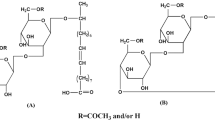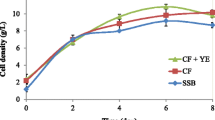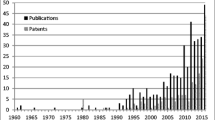Abstract
Sophorolipids (SLs) from Candida batistae has a unique structure that contains ω–hydroxy fatty acids, which can be used as a building block in the polymer and fragrance industries. To improve the production of this industrially important SLs, we optimized the culture medium of C. batistae for the first time. Using an optimized culture medium composed of 50 g/L glucose, 50 g/L rapeseed oil, 5 g/L ammonium nitrate and 5 g/L yeast extract, SLs were produced at a concentration of 24.1 g/L in a flask culture. Sophorolipids production increased by about 19% (28.6 g/L) in a fed-batch fermentation using a 5 L fermentor. Sophorolipids production more increased by about 121% (53.2 g/L), compared with that in a flask culture, in a fed-batch fermentation using a 50 L fermentor, which was about 787% higher than that of the previously reported SLs production (6 g/L). These results indicate that a significant increase in C. batistae-derived SLs production can be achieved by optimization of the culture medium composition and fed-batch fermentation. Finally, we successfully separated and purified the SLs from the culture medium. The improved production of SLs from C. batistae in this study will help facilitate the successful development of applications for the SLs.








Similar content being viewed by others
References
Franzetti A, Gandolfi I, Raimondi C, Bestetti G, Banat IM, Smyth TJ, Papacchini M, Cavallo M, Fracchia L (2012) Environmental fate, toxicity, characteristics and potential applications of novel bioemulsifiers produced by Variovorax paradoxus 7bCT5. Bioresour Technol 108:245–251
Lima TM, Procópio LC, Brandão FD, Leão BA, Tótola MR, Borges AC (2011) Evaluation of bacterial surfactant toxicity towards petroleum degrading microorganisms. Bioresour Technol 102:2957–2964
Lourith N, Kanlayavattanakul M (2009) Natural surfactants used in cosmetics: glycolipids. Int J Cosmet Sci 31:255–261
Henkel M, Müller MM, Kügler JH, Lovaglio RB, Contiero J, Syldatk C, Hausmann R (2012) Rhamnolipids as biosurfactants from renewable resources: concepts for next-generation rhamnolipid production. Process Biochem 47:1207–1219
Banat IM, Franzetti A, Gandolfi I, Bestetti G, Martinotti MG, Fracchia L, Smyth TJ, Marchant R (2010) Microbial biosurfactants production, applications and future potential. Appl Microbiol Biotechnol 87:427–444
Van Bogaert INA, Zhang J, Soetaert W (2011) Microbial synthesis of sophorolipids. Process Biochem 46:821–833
Hirata Y, Ryu M, Oda Y, Igarashi K, Nagatsuka A, Furuta T, Sugiura M (2009) Novel characteristics of sophorolipids, yeast glycolipid biosurfactants, as biodegradable low-foaming surfactants. J Biosci Bioeng 108:142–146
Chandran P, Das N (2012) Role of sophorolipid biosurfactant in degradation of diesel oil by Candida tropicalis. Bioremediat J 16:19–30
Oliveira MRD, Magri A, Baldo C, Camilios-Neto D, Minucelli T, Antonia M (2015) Review: sophorolipids a promising biosurfactant and it’s applications.
Oliveira MR, Camilios-Neto D, Baldo C, Magri A, Celligoi MA (2014) Biosynthesis and production of sophorolipids. Int J Sci Technol Res 3:133–146
Smyth TJP, Perfumo A, Marchant R, Banat IM (2010) Isolation and analysis of low molecular weight microbial glycolipids. In: Timmis KN (ed) Handbook of hydrocarbon and lipid microbiology. Springer, Berlin Heidelberg, Berlin
Kurtzman CP, Price NPJ, Ray KJ, Kuo T-M (2010) Production of sophorolipid biosurfactants by multiple species of the Starmerella (Candida) bombicola yeast clade. FEMS Microbiol Lett 311:140–146
Zhang J, Saerens KM, Van Bogaert IN, Soetaert W (2011) Vegetable oil enhances sophorolipid production by Rhodotorula bogoriensis. Biotech Lett 33:2417–2423
Ogawa S, Ota Y (2000) Influence of exogenous natural oils on the ω-1 and ω-2 hydroxy fatty acid moiety of sophorose pipid produced by Candida bombicola. Biosci Biotechnol Biochem 64:2466–2468
Rosa CA, Viana EM, Martins RP, Antonini Y, Lachance M-A (1999) Candida batistae, a new yeast species associated with solitary digger nesting bees in Brazil. Mycologia 91:428–433
Konishi M, Fukuoka T, Morita T, Imura T, Kitamoto D (2008) Production of new types of sophorolipids by Candida batistae. J Oleo Sci 57:359–369
Van Bogaert INA, Saerens K, De Muynck C, Develter D, Soetaert W, Vandamme EJ (2007) Microbial production and application of sophorolipids. Appl Microbiol Biotechnol 76:23–34
Zerkowski JA, Solaiman DKY (2007) Polyhydroxy fatty acids derived from sophorolipids. J Am Oil Chem Soc 84:463–471
Rau U, Hammen S, Heckmann R, Wray V, Lang S (2001) Sophorolipids: a source for novel compounds. Ind Crops Prod 13:85–92
Kim Y-B, Yun HS, Kim E-K (2009) Enhanced sophorolipid production by feeding-rate-controlled fed-batch culture. Biores Technol 100:6028–6032
Shin JD, Lee J, Kim YB, Han I-s, Kim E-K (2010) Production and characterization of methyl ester sophorolipids with 22-carbon-fatty acids. Biores Technol 101:3170–3174
Zerkowski JA, Solaiman DKY (2006) Synthesis of polyfunctional fatty amines from sophorolipid-derived 17-hydroxy oleic acid. J Am Oil Chem Soc 83:621–628
Huang F-C, Peter A, Schwab W (2014) Expression and characterization of CYP52 genes involved in the biosynthesis of sophorolipid and alkane metabolism from Starmerella bombicola. Appl Environ Microbiol 80:766–776
Geys R, De Graeve M, Lodens S, Van Malderen J, Lemmens C, De Smet M, Mincke S, Van Bogaert INA, Stevens C, De Maeseneire SL, Roelants SLKW, Soetaert WKG (2018) Increasing uniformity of biosurfactant production in Starmerella bombicola via the expression of chimeric cytochrome P450s. Colloids Interfaces 2:42
Acknowledgements
This work was supported in part by the R&D program of MOTIE/KEIT (10077291), in part by the R&D program of MOTIE/KEIT (10080592) and in part by the R&D program of KRICT (SS2042‐10).
Author information
Authors and Affiliations
Corresponding author
Ethics declarations
Conflict of interest
The authors declare that they have no conflict of interest.
Additional information
Publisher's Note
Springer Nature remains neutral with regard to jurisdictional claims in published maps and institutional affiliations.
Rights and permissions
About this article
Cite this article
Kim, JH., Oh, YR., Han, SW. et al. Enhancement of sophorolipids production in Candida batistae, an unexplored sophorolipids producer, by fed-batch fermentation. Bioprocess Biosyst Eng 44, 831–839 (2021). https://doi.org/10.1007/s00449-020-02493-4
Received:
Accepted:
Published:
Issue Date:
DOI: https://doi.org/10.1007/s00449-020-02493-4




